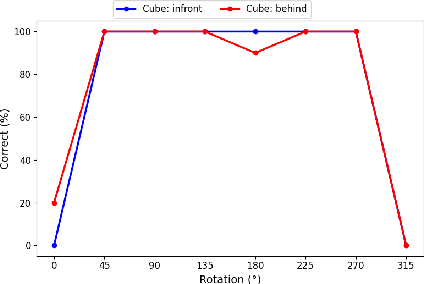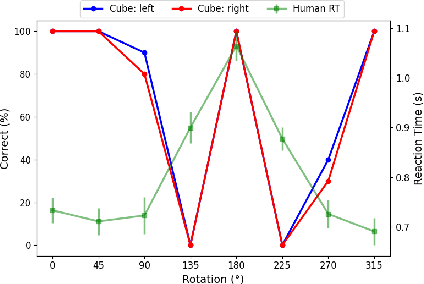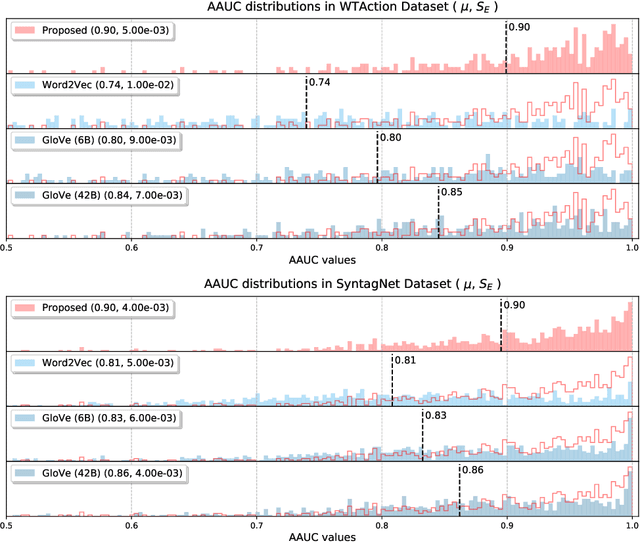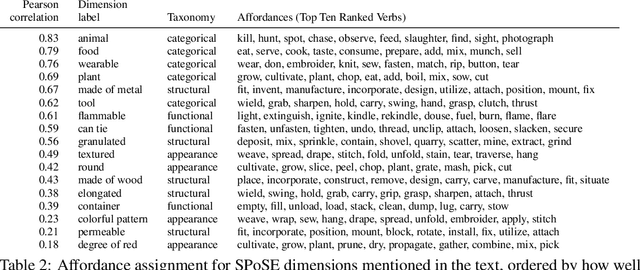Kristin Woodard
Failures in Perspective-taking of Multimodal AI Systems
Sep 20, 2024



Abstract:This study extends previous research on spatial representations in multimodal AI systems. Although current models demonstrate a rich understanding of spatial information from images, this information is rooted in propositional representations, which differ from the analog representations employed in human and animal spatial cognition. To further explore these limitations, we apply techniques from cognitive and developmental science to assess the perspective-taking abilities of GPT-4o. Our analysis enables a comparison between the cognitive development of the human brain and that of multimodal AI, offering guidance for future research and model development.
Understanding Object Affordances Through Verb Usage Patterns
Jun 22, 2020



Abstract:In order to interact with objects in our environment, we rely on an understanding of the actions that can be performed on them, and the extent to which they rely or have an effect on the properties of the object. This knowledge is called the object "affordance". We propose an approach for creating an embedding of objects in an affordance space, in which each dimension corresponds to an aspect of meaning shared by many actions, using text corpora. This embedding makes it possible to predict which verbs will be applicable to a given object, as captured in human judgments of affordance. We show that the dimensions learned are interpretable, and that they correspond to patterns of interaction with objects. Finally, we show that they can be used to predict other dimensions of object representation that have been shown to underpin human judgments of object similarity.
 Add to Chrome
Add to Chrome Add to Firefox
Add to Firefox Add to Edge
Add to Edge